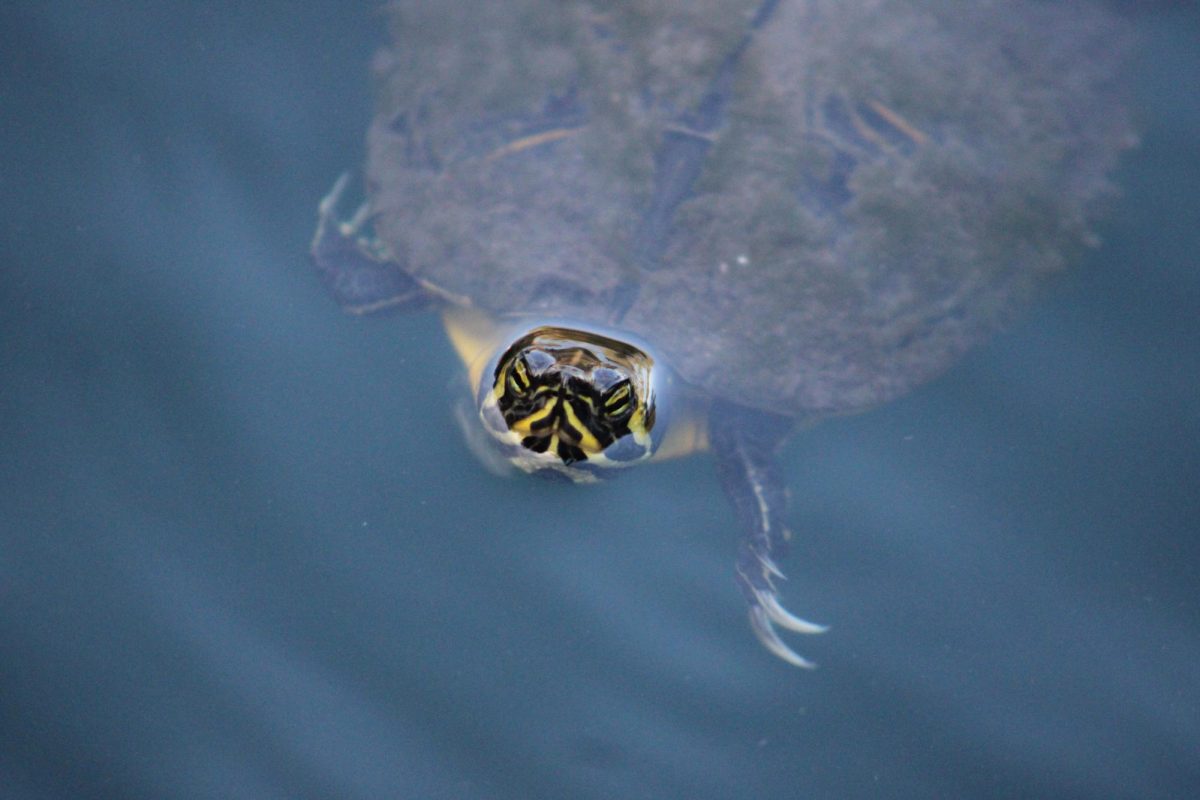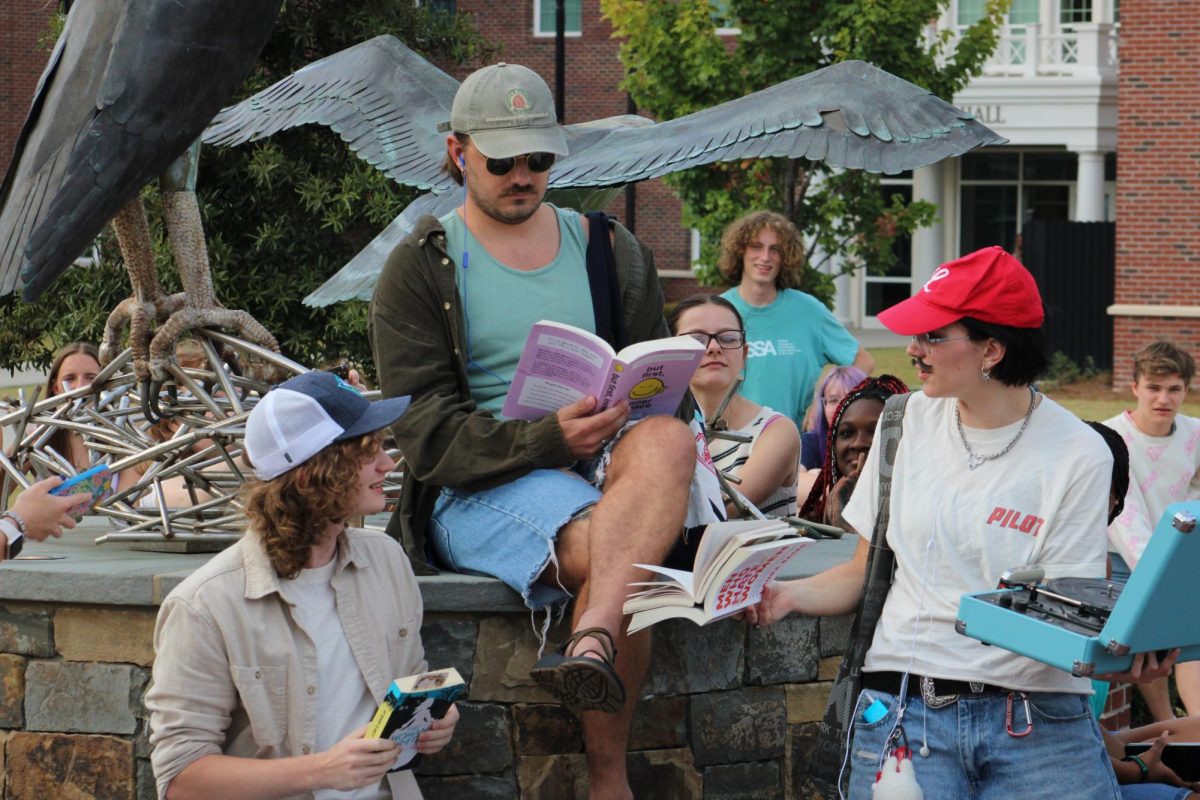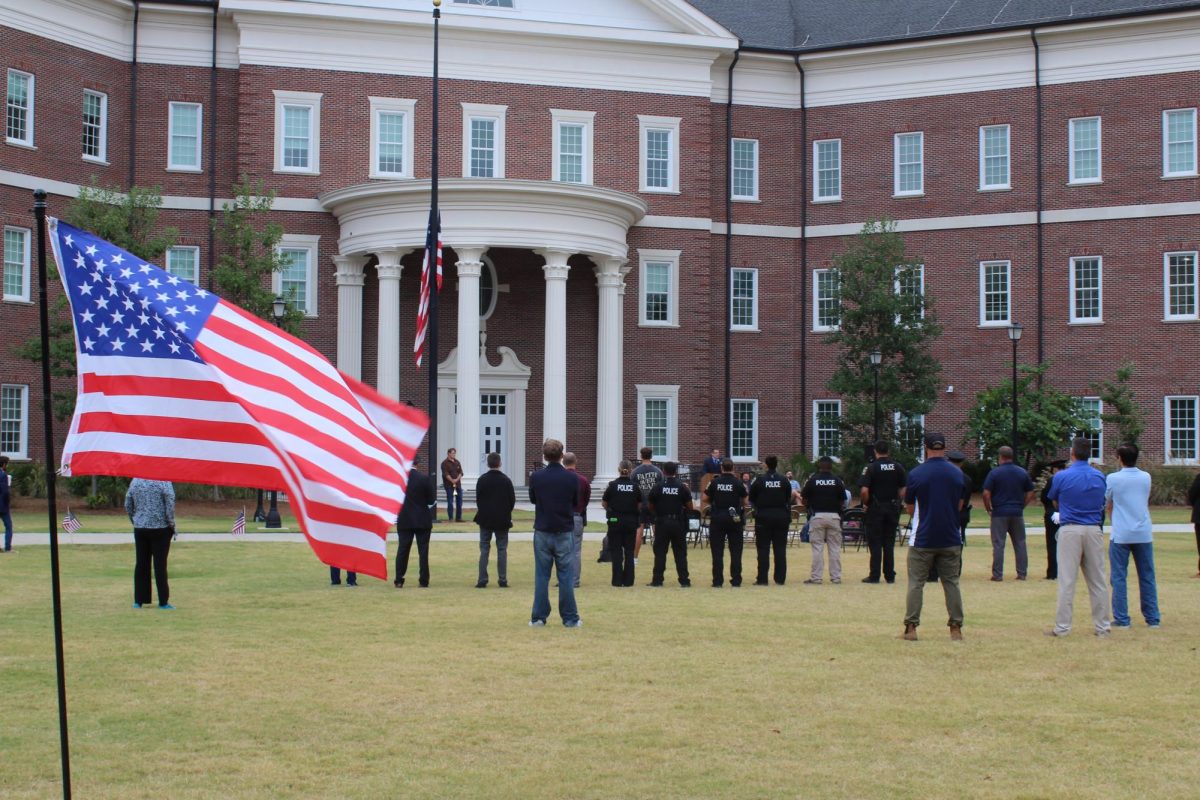After class, you decide to sit down on a bench overlooking one of UNCW’s several small ponds. This break is much needed; you’ve had a grueling school day, and the blazing heat on Chancellor’s Walk made you sluggish and impatient.
Sunlight streams from the sky and mixes into the water below you, creating a beautiful iridescent glow while the sound of fountain water splashing back at the surface brings you inner peace.
Suddenly, you see a timid little head pop out of the water and slowly make its way to the land. It is a turtle, his yellow markings becoming evident as he crawls out onto the edge of the grass in front of you. All he does is give you a slow blink and stretch his head, but you are immediately enamored with this beautiful wonder of nature. And you aren’t alone.
The campus turtles have made an identity for themselves here. At a coastal university with many students studying marine science, it’s no surprise that these shelled friends are very popular among Seahawks. Every day, they capture the attention and hearts of those strolling past the small bodies of water we have around campus.
At some point in the mid-90s came the brand-new impoundment of Leutze Lake, one of the most popular turtle-watching spots on campus. Students often kneel over the railing of Campus Commons Amphitheater and throw food in, watching the turtles paddle to the surface for a bite.
Another common turtle hub perhaps the most popular is the big pond stretched out beside Shore Dining Hall. When the turtles see humans gathered on the long bridge leaning over the railing, they eagerly wait for food to fall.
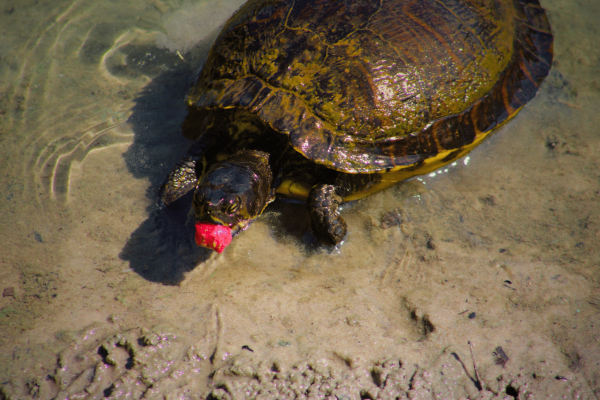
Though they have been assigned several names by students — ‘cutie,’ ‘buddy,’ ‘little guy’ — these turtles do have scientific titles, the two most common on campus being the eastern box turtle and the yellow-bellied slider. Chances are, if you’re observing the turtles in the pond, they are yellow-bellied sliders, since they spend far more time basking in the water than box turtles do.
There is also the common snapping turtle, far more infrequent, with only one spotted occasionally in the Shore bridge pond. One Reddit user, u/cjsleme, dubs him “The Snapfather” — a name he picked up from other students while working a summer camp at UNCW. He was only there for a week, but that was enough time to fall in love with the semiaquatic reptiles. “Watching them pop up felt like a reset button. They reminded me that direction matters more than speed,” he said.
Turtles offer more than entertainment — they are a life lesson waiting to be learned. “They live in the present. Sun. Food. Safety. That is enough,” he said. “We should be more like turtles.”

Turtle-watching is also a communal activity on campus that brings people together. “Watching the turtles made others stop and look at them too,” u/cjsleme said. “Folks told me they stop to watch them between classes. It felt like an unofficial campus ritual.”
As mentioned, individuals will often choose to feed the turtles — especially next to Shore, where the grub is plentiful. If you choose to feed them, here are some ideal options, and here are some to avoid.
Depending on how one chooses to view it, UNCW’s little ponds are reflective of the bigger “school” around them. “They […] showed me how a place can feel like a tiny community without anyone talking. Sliders, the big snapper, fish, all doing their thing and not making it personal,” u/cjsleme wrote. “They taught me patience, routine, and that calm is a choice. They made me laugh, too.”
To know and appreciate the turtles is to understand the balance between bustling campus culture and quiet nature. They are a reminder of tranquility and stability — an everlasting joy in the middle of academic chaos, always a short walk away when you wish to see them.
And everlasting is no exaggeration; yellow-bellied sliders have a lifespan of 20 – 30 years in the wild, eastern box turtles average 25 – 40, and the Snapfather could live anywhere from 30 – 60 years, though some new research suggests he could even age to see his 100th birthday.
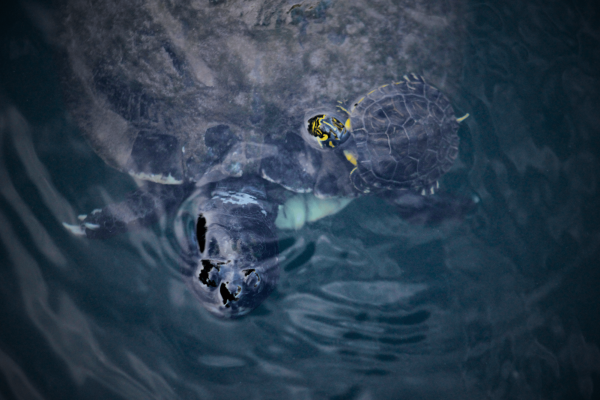
This means that some of the same turtles we see today have been admired by alumni from many years ago — a sort of immortal, unwavering totem in the life of a UNCW student. And as those students moved on to jobs around the globe, the turtles remained on our campus, just as satisfied as ever.
“[The turtles] were content and didn’t aspire to go anywhere,” u/cjsleme wrote. “They didn’t wonder if there was a bigger, better pond somewhere else.”
They were content where they were — a reminder to always be present, ground yourself and appreciate the simple life like a turtle.


